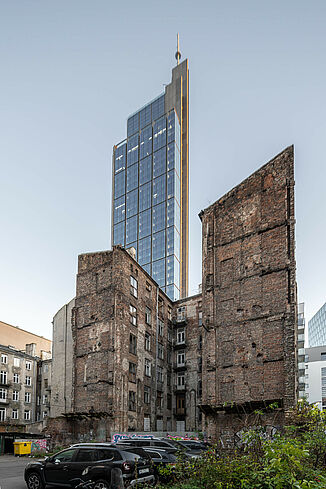Sustainable project development – Varso Tower Warsaw
Since 2022, Warsaw has been home to the tallest building in the EU. Looking at the continent as a whole, there are of course taller buildings than the 310 m high tower. However, with regard to the EU, Warsaw has made it to the top of the list with the construction of the Varso Tower. The first place on the list of Warsaw's tallest buildings was previously occupied by the city's Palace of Culture, an unloved relic from Soviet times. The Varso Tower has now overtaken this and the population is happy about a new landmark for the city skyline.
The skyscraper was designed by the renowned London architectural firm Foster + Partner. The British firm cooperated with Warsaw-based HRA Architekci for this exceptional project. The Varso Tower is the showpiece of the overall Varso Place project. It’s a trio of towers with mixed uses – offices, hotels and restaurants, an innovation centre and shopping areas. With an area of 70,000m², the majority of the total area of the Varso Tower is allotted to office areas. For these, the main focus in the planning phase was on the well-being of the users.
Sustainable design and energy saving aspects
The entire building is designed with climate friendliness in mind. It represents an excellent combination of sustainable design and energy-saving aspects. In addition, green areas were created. Numerous trees were planted not only in the lobby, but also on a terrace at a height of over 200 metres. Furthermore, the surrounding area was considered in the planning, which is why Chmielna Street, where Varso Place is located, was also planted with greenery. 80 mature trees form a counterpoint to limestone and glass in the outdoor area.
The high standards that were important to the planners paid off, as the building was certified by independent auditors with the BREEAM label "outstanding" and the WELL Building Standard.
REGUPOL was used in this building to decouple building services systems. Adjacent areas are thus effectively protected from the transmission of structure-borne noise.






